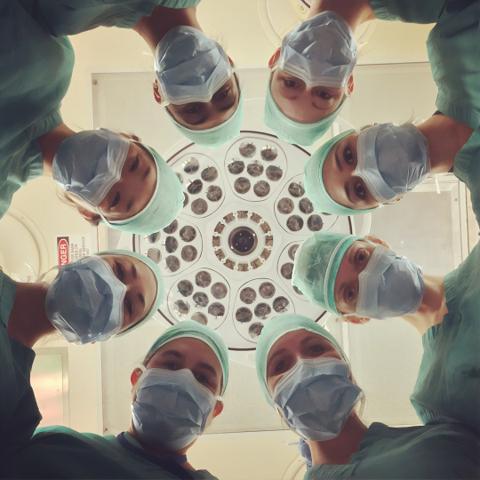Making the difference.
SMD stores raw and normalized data from microarray experiments, as well as their corresponding image files. In addition, SMD provides interfaces for data retrieval, analysis and visualization. Data is released to the public at the researcher's discretion or upon publication
SMD Tutorial!!
Resume Session
Items of Interest
Gene Expression Profiling of Helicobacter pylori Reveals a Growth-Phase-Dependent Switch in Virulence Gene Expression. Gene Expression Profiling of Helicobacter pylori Reveals a Growth-Phase-Dependent Switch in Virulence Gene Expression. Thompson LJ, et al. (2003) Infect Immun 71(5):2643-2655 Discovery of distinctive gene expression profiles in rheumatoid synovium using cDNA microarray technology: evidence for the existence of multiple pathways of tissue destruction and repair. Discovery of distinctive gene expression profiles in rheumatoid synovium using cDNA microarray technology: evidence for the existence of multiple pathways of tissue destruction and repair. Van Der Pouw Kraan TC, et al. (2003). Genes Immun 4 (3):187-96
Variation in gene expression patterns in human gastric cancers Variation in gene expression patterns in human gastric cancers Chen, X at al (2003) Mol. Biol. Cell 10.1091/mbc.E02-12-0833 Gene expression profiling in prostate cancer cells with akt activation reveals fra-1 as an akt-inducible gene. Gene expression profiling in prostate cancer cells with akt activation reveals fra-1 as an akt-inducible gene. Tiwari G, et al. (2003). Mol Cancer Res 1(6):475-84
Significance Analysis of Lexical Bias in Microarray Data Significance Analysis of Lexical Bias in Microarray Data Kim CC and Falkow S (2003). BMC Bioinformatics 4:12 Global analysis of dauer gene expression in Caenorhabditis elegans Global analysis of dauer gene expression in Caenorhabditis elegans Wang, J. and Kim, SK (2003).Development 130: 1621-1634
SMD Access: Access to non-public data is limited to registered Stanford researchers and their collaborators. Please see SMD Registration for more specific information. If you have further questions regarding access, please e-mail the Stanford Microarray Database curators at array@genome.stanford.edu.
Project Funding: The National Cancer Institute at the US National Institutes of Health, the National Science Foundation, and the Howard Hughes Medical Institute fund the Microarray Database. The database is a joint project in the Departments of Biochemistry and Genetics at the School of Medicine, Stanford University.
Database Copyright © 2001 The Board of Trustees of Leland Stanford Junior University. Permission to use the information contained in this database was given by the researchers/institutes who contributed or published the information. Users of the database are solely responsible for compliance with any copyright restrictions, including those applying to the author abstracts. Documents from this server are provided "AS-IS" without any warranty, expressed or implied.
DNA Microarrays: Unveiling Gene Expression Profiles
DNA microarrays, also known as DNA chips or gene chips, are established tools in molecular biology research designed to analyze the expression levels of numerous genes simultaneously. This blog post explores the core principles of DNA microarrays, their applications in various scientific disciplines, and recent advancements in the technology.
Functional Components of DNA Microarrays
A DNA microarray is a miniaturized platform containing a collection of microscopic DNA spots immobilized on a solid surface like glass or nylon. These spots, known as probes, can be of two main types:
- Complementary DNA (cDNA) probes: These represent reverse-transcribed fragments of messenger RNA (mRNA) molecules, reflecting the actively transcribed genes in a biological sample.
- Oligonucleotide probes: These are short, single-stranded DNA sequences designed to specifically target genes of interest.
The experimental process involves several key steps:
- Sample preparation: RNA is extracted from the biological sample under investigation (e.g., cells, tissues). For cDNA microarrays, the RNA is reverse-transcribed to generate fluorescently labeled cDNA probes.
- Hybridization: The labeled probes are applied to the microarray surface and allowed to hybridize with their complementary sequences on the probes.
- Washing and scanning: Following hybridization, the non-specifically bound probes are washed away. The remaining fluorescently labeled probes are detected by a scanner. The intensity of the fluorescence signal is directly proportional to the abundance of the bound transcripts, indicating the relative expression level of the corresponding gene.

Applications of DNA Microarrays in Research
DNA microarrays have revolutionized gene expression analysis across various scientific fields:
- Functional Genomics: They enable researchers to identify genes with differential expression in distinct tissues, developmental stages, or under various experimental conditions. This knowledge is essential for understanding gene function and regulation.
- Medical Research: Microarrays are used to identify genes associated with diseases, aiding in diagnosis, prognosis, and development of targeted therapies.
- Toxicology: They can be used to assess the impact of environmental toxins or drugs on gene expression patterns.
- Agricultural Biotechnology: Microarrays are employed to study gene expression in plants, facilitating the development of improved crop varieties with desired traits.
Advancements in DNA Microarray Technology
The field of DNA microarray technology is constantly evolving, with advancements in several areas:
- High-density microarrays: These arrays contain a significantly larger number of probes compared to traditional microarrays, allowing for more comprehensive gene expression analysis.
- Single-cell microarrays: These enable researchers to analyze gene expression at the level of individual cells, providing deeper insights into cellular heterogeneity.
- Next-generation sequencing (NGS) microarrays: Combining microarrays with NGS techniques allows for targeted sequencing of specific genes identified by the microarray analysis, offering a more detailed understanding of gene expression and regulation.

Conclusion
DNA microarrays have become a fundamental tool for gene expression analysis, providing a powerful resource for researchers in various scientific fields. As the technology continues to develop, DNA microarrays will undoubtedly play an increasingly important role in unraveling the complexities of gene regulation and its influence on biological processes and human health
Grow with Us
Put your people at the heart of your marketing with tools that help you get to know your audience
and see who you should be talking to.
